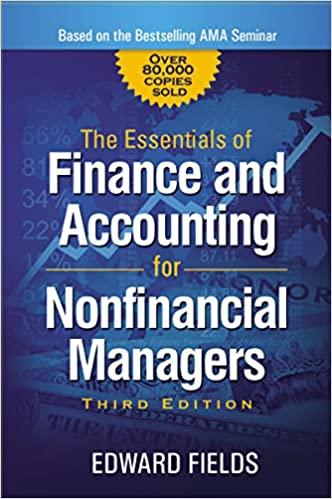Question
High-end Ltd. revenue has been stagnating in recent times. As a means of increasing its revenue, the company=s management is considering expanding its customer base.
High-end Ltd. revenue has been stagnating in recent times. As a means of increasing its revenue, the company=s management is considering expanding its customer base. At a recent workshops, the Managing Director of the company came into contact with the concept of customer lifetime value (CLTV). He would like to utilise this concept to test the feasibility of the expansion plans. The firm thus hired a marketing consultant to prepare some estimates for the hotel. Below are the estimates prepared by the consultant:
No. of new customers the campaign would attract 1,200
Yearly retention rates:
|
Yr 1 |
Yr 2 |
Yr 3 |
Yr 4 |
Yr 5 |
|
50% |
75% |
80% |
90% |
100% |
Acquisition costs (per customer): $980
Desired rate of return: 20%
It will run for one year (Year 0)
The Present Value Interest Factors (PVIF) based on a 20% rate of return:
|
|
Yr 0 |
Yr 1 |
Yr 2 |
Yr 3 |
Yr 4 |
Yr 5 |
|
PVIF (20%) |
1.000 |
0.833 |
0.694 |
0.579 |
0.482 |
0.402 |
The consultant also indicated to management that she expected all the operating revenue and costs patterns to be the same for these acquired customers as for those already serviced. Based on historical patterns the average guest spends 10 nights at the hotel and pay $91 per night. Historically, costs per guest are 45% of revenue and this is expected to continue.
Based on the above information management of High-end Ltd. asked you to calculate the per customer CLTV in dollars and give a brief recommendation concerning the feasibility of the program.
No. of customer in year 2 = No. of customers in year 3 = No. of customers in year 4 = No. of customers in year 5 = Year 1 revenue = $
Year 2 revenue = $
Year 3 revenue = $
Year 4 revenue = $
Year 5 revenue = $
Cost of sales (COGS) year 1 = $
Cost of sales (COGS) year 2 = $
Cost of sales (COGS) year 3 = $
Cost of sales (COGS) year 4 = $
Cost of sales (COGS) year 5 = $
Total acquisition costs = $
Year 1 cash flows = $
Year 2 cash flows = $
Year 3 cash flows = $
Year 4 cash flows = $
Year 5 cash flows = $
Customer value for year 1 = $
Customer value for year 2 = $
Customer value for year 3 = $
Customer value for year 4 = $
Customer value for year 5 = $Answer
Per customer lifetime value (CLTV) = $
Step by Step Solution
There are 3 Steps involved in it
Step: 1

Get Instant Access to Expert-Tailored Solutions
See step-by-step solutions with expert insights and AI powered tools for academic success
Step: 2

Step: 3

Ace Your Homework with AI
Get the answers you need in no time with our AI-driven, step-by-step assistance
Get Started


